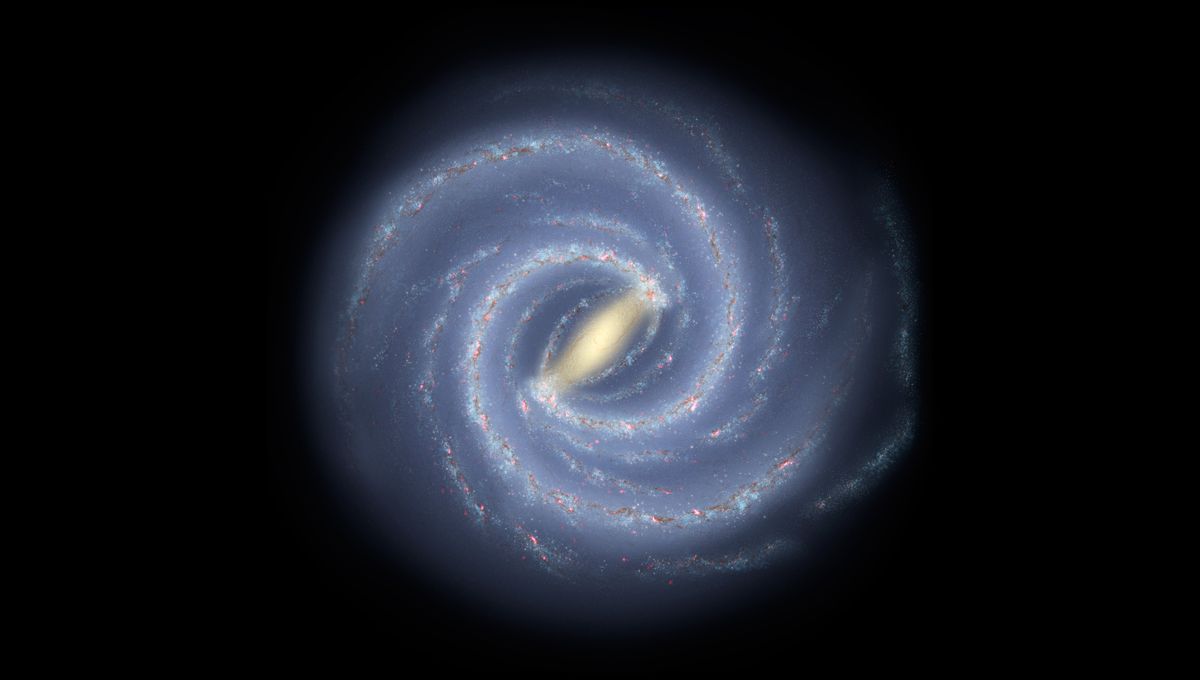
Astronomers believe that it takes around 7 billion years (about half the age of the universe) to end up with a galaxy such as ours. So you can imagine their surprise when they observed ceers-2112, a galaxy with the same shape as the Milky Way, being well-ordered, and quite massive, just 2 billion years after the Big Bang.
Our galaxy, the Milky Way, is known as a barred spiral galaxy. It has several arms containing many billions of stars, and a central over-density block that is shaped like a sausage from which the spiral arms extend. Other spirals have a more spherical core, such as the Whirlpool Galaxy.
The general idea is that galaxies are a chaotic mess at first. Through gas falling onto them from intergalactic space and collisions with other galaxies, they grow and eventually settle into disks or spheres. The disk is where the spiral arms are and at the core of the disk, the older stars end up in bulge or bar formations. It had been thought barred spiral galaxies like the Milky Way could be not be seen before the universe was at least half its current age (13.8 billion years), but it appears that the process is much faster than expected.
“This galaxy, named ceers-2112, formed soon after the Big Bang,” co-author Dr Alexander de la Vega, from the University of California, explained in a statement. “Finding ceers-2112 shows that galaxies in the early universe could be as ordered as the Milky Way. This is surprising because galaxies were much more chaotic in the early universe and very few had similar structures to the Milky Way.
“The bar in ceers-2112 suggests that galaxies matured and became ordered much faster than we previously thought, which means some aspects of our theories of galaxy formation and evolution need revision.”
Ceers-2112 suggests that galaxies might not take billions of years to become ordered and well-behaved spiral galaxies. For this galaxy, the bar may have assembled in just 400 million years and the disk of stars might have been happily in place more than 12 billion years ago. Ceers-2112 is the closest progenitor to the Milky Way discovered in the first 4 billion years of the universe and its discovery will change both theories and observations, which in this case were conducted by JWST.
“First, theoretical models of galaxy formation and evolution will need to account for some galaxies becoming stable enough to host bars very early in the universe’s history. These models may need to adjust how much dark matter makes up galaxies in the early universe, as dark matter is believed to affect the rate at which bars form,” de la Vega said.
“Second, the discovery of ceers-2112 demonstrates that structures like bars can be detected when the universe was very young. This is important because galaxies in the distant past were smaller than they are now, which makes finding bars harder. The discovery of ceers-2112 paves the way for more bars to be discovered in the young universe.”
The study is published in Nature.
Source Link: Incredible Milky Way Doppelgänger Has Been Found In An Unexpected Place